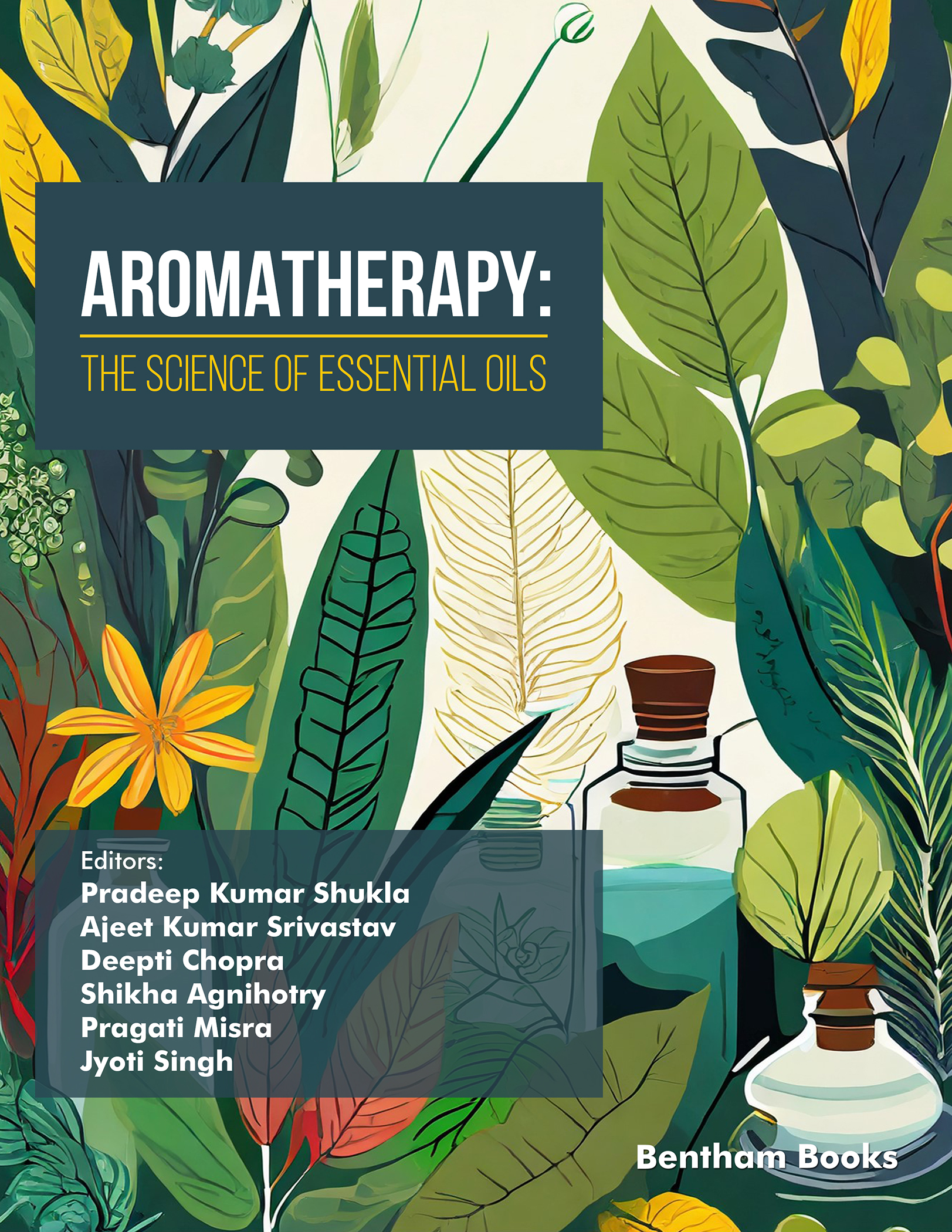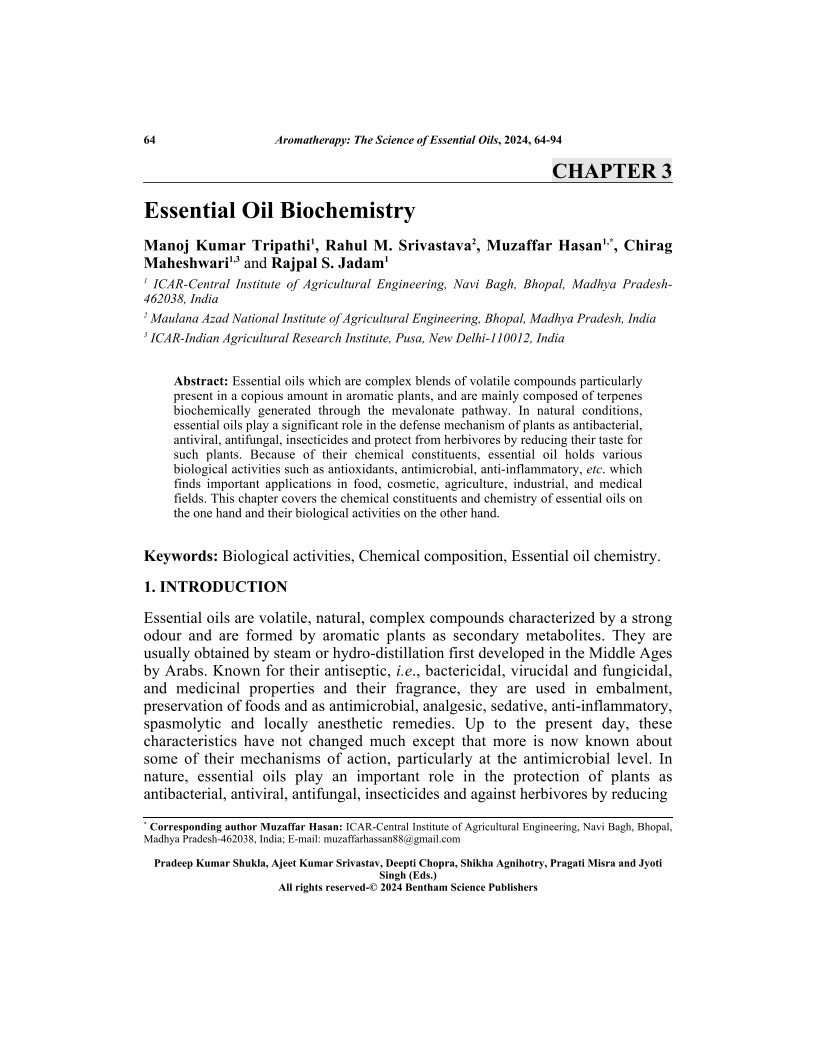Essential Oil Biochemistry

- Authors: Manoj Kumar Tripathi1, Rahul M. Srivastava2, Muzaffar Hasan3, Chirag Maheshwari4, Rajpal S. Jadam5
-
View Affiliations Hide Affiliations1 ICAR Central Institute of Agricultural Engineering, Navi Bagh, Bhopal, Madhya Pradesh 462038, India 2 Maulana Azad National Institute of Agricultural Engineering, Bhopal, Madhya Pradesh, India 3 ICAR-Central Institute of Agricultural Engineering, Navi Bagh, Bhopal, Madhya Pradesh 462038, India 4 ICAR-Central Institute of Agricultural Engineering, Navi Bagh, Bhopal, Madhya Pradesh 462038, India 5 ICAR-Central Institute of Agricultural Engineering, Navi Bagh, Bhopal, Madhya Pradesh 462038, India
- Source: Aromatherapy: The Science of Essential Oils , pp 64-94
- Publication Date: April 2024
- Language: English
Essential Oil Biochemistry, Page 1 of 1
< Previous page | Next page > /docserver/preview/fulltext/9789815136203/chapter-3-1.gif
Essential oils which are complex blends of volatile compounds particularly present in a copious amount in aromatic plants, and are mainly composed of terpenes biochemically generated through the mevalonate pathway. In natural conditions, essential oils play a significant role in the defense mechanism of plants as antibacterial, antiviral, antifungal, insecticides and protect from herbivores by reducing their taste for such plants. Because of their chemical constituents, essential oil holds various biological activities such as antioxidants, antimicrobial, anti-inflammatory, etc. which finds important applications in food, cosmetic, agriculture, industrial, and medical fields. This chapter covers the chemical constituents and chemistry of essential oils on the one hand and their biological activities on the other hand.
-
From This Site
/content/books/9789815136203.chapter-3dcterms_subject,pub_keyword-contentType:Journal -contentType:Figure -contentType:Table -contentType:SupplementaryData105

